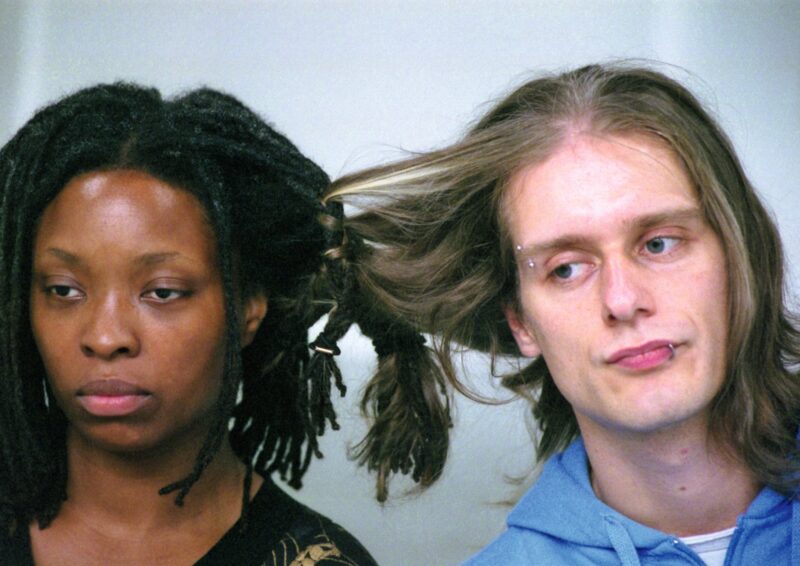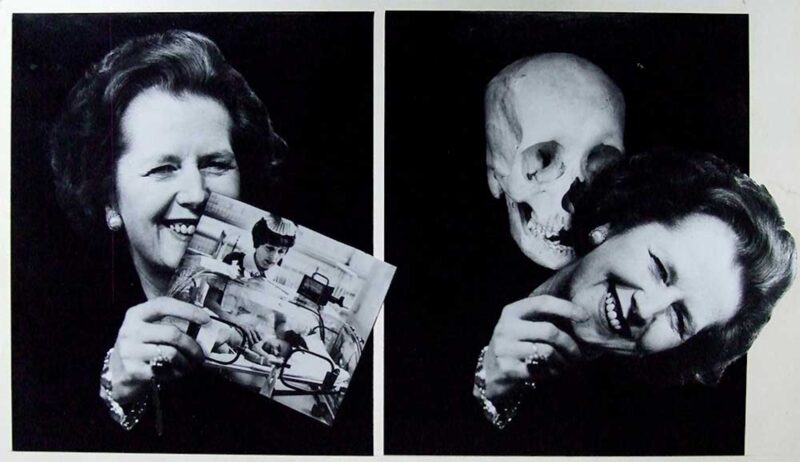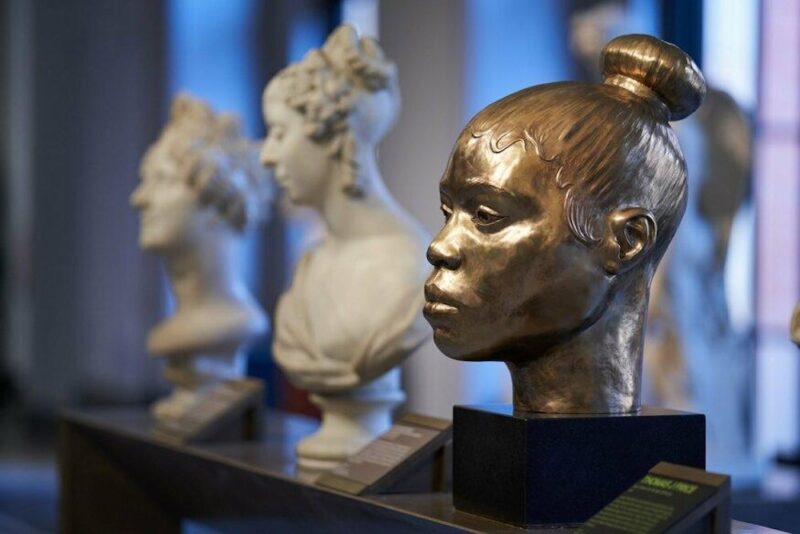Whitechapel Gallery has just opened the first major UK retrospective of the artist Nicole Eisenman (b.1965, France, lives and works in the USA) coinciding with Frieze Week.

Nicole Eisenman: What Happened brings together over 100 works from across the artist’s three-decade career – many of which have not previously been shown in the UK. Encompassing large-scale, monumental paintings alongside sculptures, monoprints, animation and drawings, the exhibition showcases the extraordinary range and formal inventiveness that characterises her practice. The works on display illuminate the critical, yet often highly humorous, commentary she uses to explore some of the most prescient socio-political issues of the day. Themes include gender, identity and sexual politics, recent civic and governmental turmoil in the United States, protest and activism, and the impact of technology on personal relationships and romantic lives. The exhibition is arranged chronologically across eight sections, beginning with a series of ink drawings depicting lesbian life in downtown New York in the 1990s. Works including Untitled (Lesbian Recruitment Booth) (1992) and Captured Pirates on the Island of Lesbos (1992) combine eroticism with humour and wittily challenge conventional ideas about gender while questioning patriarchal power-structures.
Also on show is an animation created in collaboration with the artist Ryan McNamara (b.1979, USA, lives and works in the USA) which brings to life a series of ten site-specific temporary murals Eisenman created between 1992 and 2003. This is the first time that these now-lost works have been represented in a survey of Eisenman’s work.
Having found critical success in the earlier part of her career, by the 2000s Eisenman began a series of humorous paintings that reflect what she felt was a decline in interest in her work at the time. Paintings in this section include From Success to Obscurity (2004) and Were-artist (2007) which depicts an artist, brush in hand, who has begun to metamorphosise into a monster.
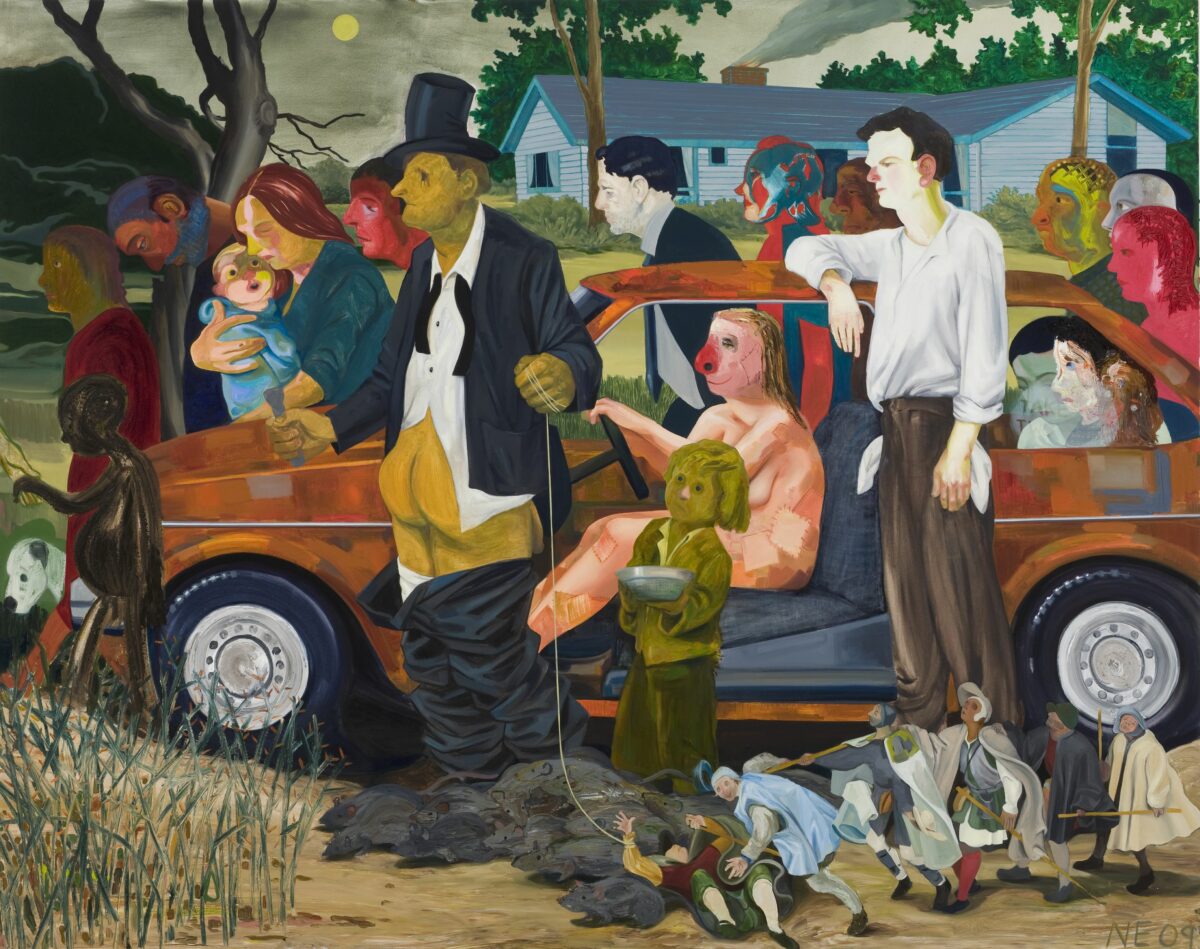
Following this self-referential series, Eisenman’s work underwent a marked shift to explore wider topical concerns. She created a number of large-scale paintings in response to a tumultuous period in the late 2000s that encompassed the global recession, the Iraq War and the re-election of George W Bush. Paintings like Coping (2008) and The Triumph of Poverty (2009) recall the densely peopled scenes of Breughel and Holbein and are painted in styles comparable to Munch, Ensor and German expressionists. Eisenman has also depicted scenes of activism and political protest drawn from real life. Many of these paintings convey a strong sense of community and solidarity, including the Beer Gardens series (2009–17). These paintings depict Brooklyn beer gardens as gathering places, where people share their experiences and frustrations with their material circumstances and wider political life.
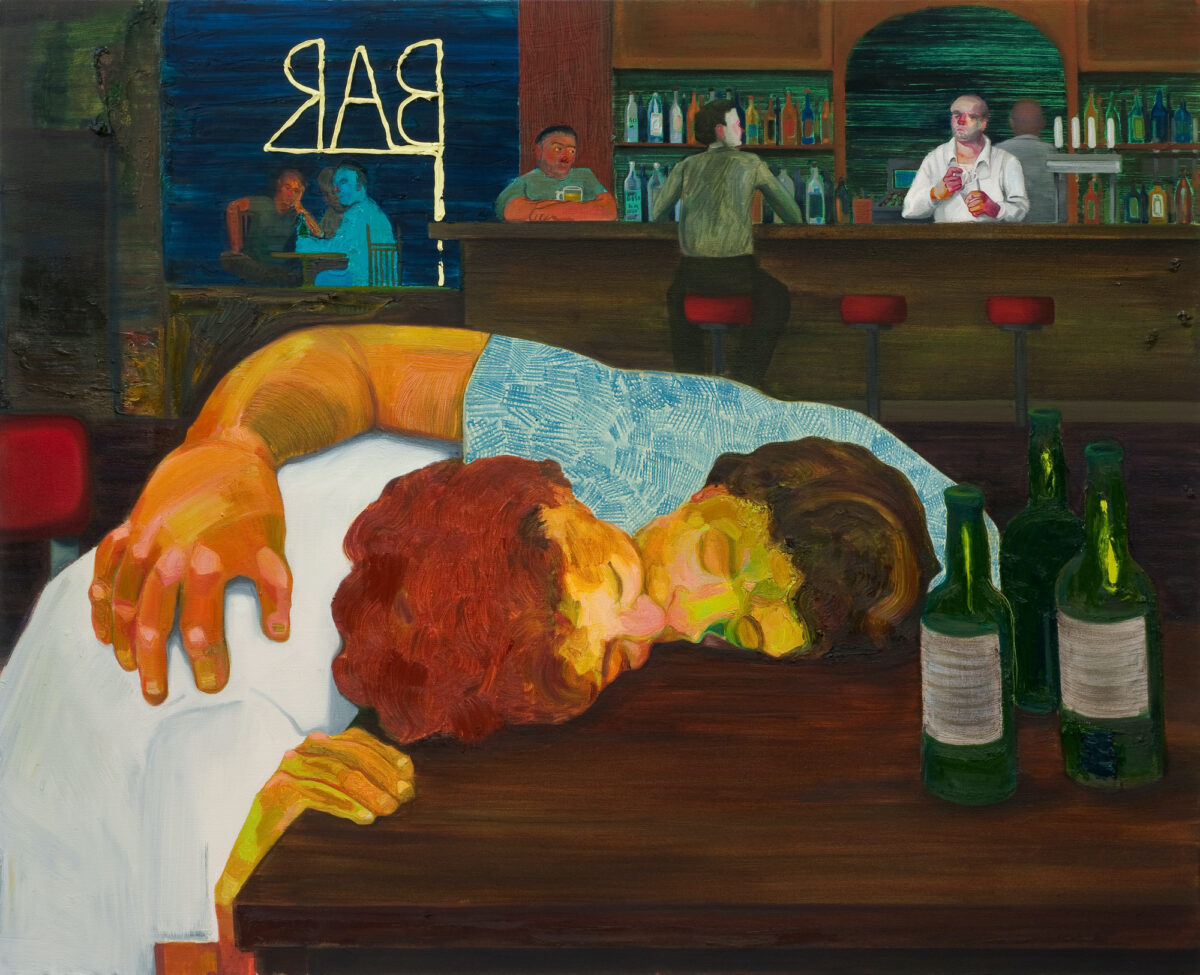
During the 2010s, Eisenman began a series of paintings that explore the increasing prevalence of hand-held technology and what Eisenman felt was an accompanying rise in narcissistic behaviour during nascent ‘selfie culture’. In paintings that reflect on queer domesticity such as Morning Studio (2016) and Long Distance (2015), the artist explores ways in which couples communicate via screens and how technology modulates human behaviour, in both private and public spaces. Also on display is The Drawing Lesson (2012) which depicts a life drawing class, as seen from the perspective of one of the participants. This work was first displayed at the Whitney Biennial of that year, at which she also hosted a real-life drawing class.
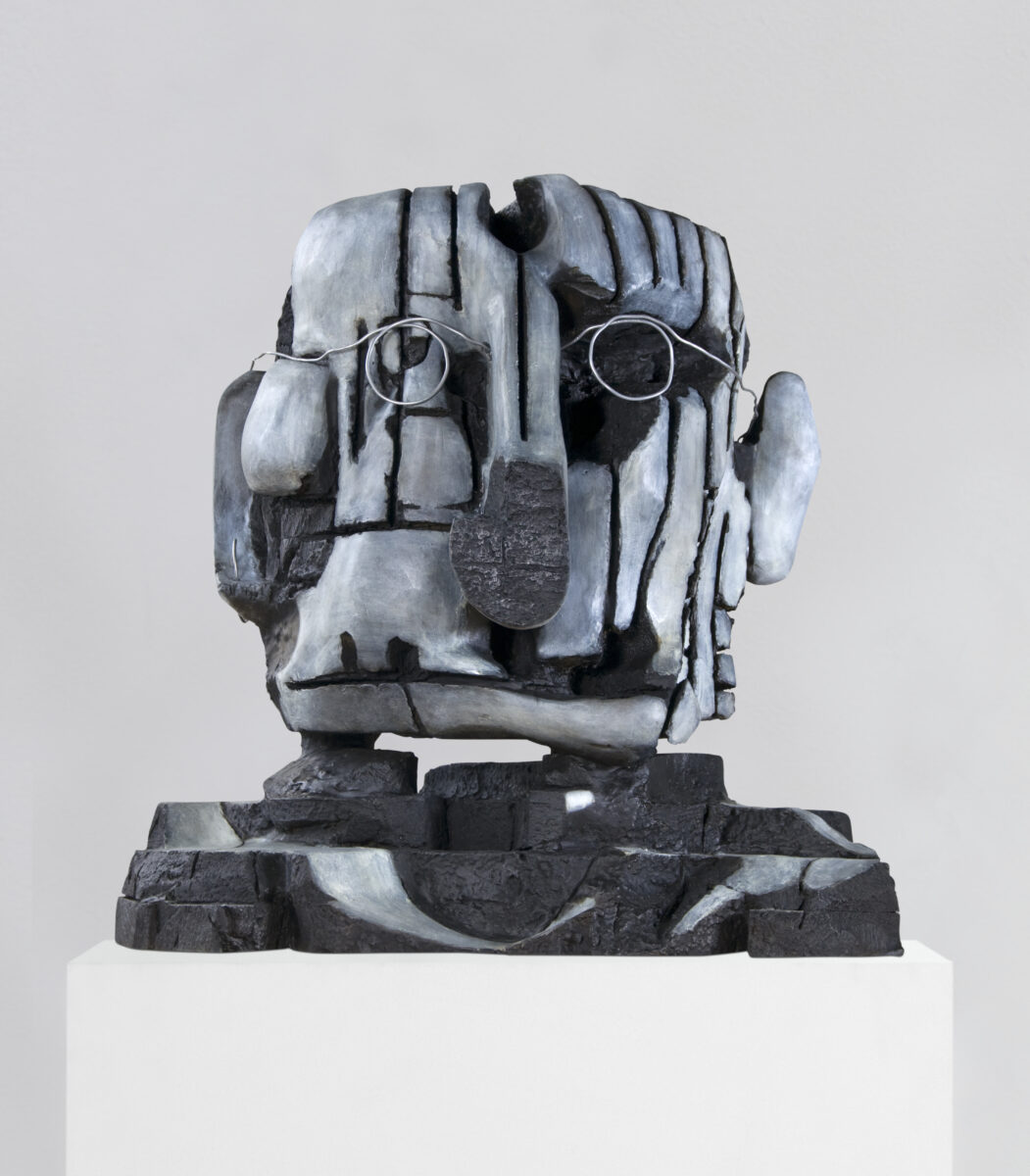
Across Eisenman’s oeuvre, she has repeatedly returned to the motif of the head, once stating ‘When you can’t think of what to draw, draw a head.’ She has experimented with depictions of heads across multiple mediums and works in the section, including Head with Demon (2018) sculpted from bronze and oil painting Econ Prof (2019). From 2011 onwards Eisenman increasingly incorporated printmaking methods, including lithography, etching and woodblock printing into her practice. Other works collected in this part of the exhibition represent this development, as well as examples of Eisenman’s painted aluminium reliefs, made in 2017. In 2021, Eisenman was among five artists shortlisted to create a sculptural commission for the fourth plinth commission in London’s Trafalgar Square. Her maquette for this proposal – an oversized jewellery tree draped with mementos, trinkets and detritus reflecting the city surroundings – is also on view.
Eisenman has continued to use her work as a means of overt political statement and expression, and following the election of Donald Trump in 2016, she began a series of allegorical representations of the American right. Three large paintings are on display, including Heading Down River on the USS J- Bone of an Ass (2017) which depicts a group of sailors on a polluted river heading towards a waterfall and Dark Light (2017) which shows a group of MAGA-cap wearing men driving around in a pick-up truck, deliberately belching black fumes into the air.
The final section of the exhibition is dedicated to Maker’s Muck (2022), a large sculpture that explores the nature of the creative process and acts as an informal survey of Eisenman sculptural practice. The kinetic work features a giant figure beside a rotating potter’s wheel, whose fingers bounce off the clay without moulding it, while surrounded by maquettes for many of Eisenman’s best-known works. Also on show is a reproduction of Eisenman’s most recent large-scale painting The Abolitionists in the Park which shows a gathering outside City Hall in New York during the Black Lives Matter (BLM) and Defund the Police demonstrations that took place in the wake of the murder of George Floyd. Based on memories and experience, rather than press photographs, this monumental painting portrays several notable writers, artists and activists including Hannah Black and Jasmine Sanders.
Nicole Eisenman: What Happened is presented in cooperation with Museum Brandhorst, Munich and curated by Mark Godfrey and Monika Bayer-Wermuth with the assistance of Lydia Yee and Cameron Foote at Whitechapel Gallery. The exhibition premiered earlier this year at Museum Brandhorst and following the Whitechapel Gallery will travel to the Museum of Contemporary Art, Chicago, from 6 April to 1 September 2024.
Nicole Eisenman: What Happened 11th October 2023 – 14th January 2024, Whitechapel Gallery
Accompanying the exhibition is a new publication documenting the full breadth of Eisenman’s career via ten newly commissioned texts and over 200 colour illustrations. Essays by curators Mark Godfrey and Monika Bayer-Wermuth survey developments in Eisenman’s work since the 1990s, while Chloe Wyma considers her recent engagement with national and institutional politics. Other contributors include Helena Reckitt, who discusses Eisenman’s large-scale mural for the 1993 exhibition Bad Girls at the Institute of Contemporary Arts and Joe Scotland, who discusses a 2012 sculptural commission at Studio Voltaire, both in London. Also featured are texts by artists, writers and curators, including Jadine Collingwood, Britta Peters, Ann Philbin, A.L. Steiner and Nicola Tyson, many of whom have collaborated with Eisenman and provide personal reflections on significant past projects and her engagement with queer and feminist activism.
About the artist

Nicole Eisenman (b.1965, France, lives and works in the USA) works across painting, drawing, installation and sculpture. She received the prestigious MacArthur Foundation Fellowship award in 2015 for ‘expanding the expressive potential of the figurative tradition in works that engage contemporary social issues and restore cultural significance to the representation of the human form.’ Additionally, she has been awarded the Guggenheim Fellowship (1996), Carnegie Prize (2013), the Suzanne Deal Booth/FLAG Art Foundation Prize (2018), and was inducted into the American Academy of Arts and Letters in 2018.
Her work has been shown in numerous solo exhibitions, such as Nicole Eisenman: Untitled (show) at Hauser & Wirth, New York (2022); Heads, Kisses, Battles: Nicole Eisenman and the Moderns at Kunsthalle Bielefeld, Bielefeld (2021), which travelled to Aargauer Kunsthaus, Aarau (2022), Foundation Vincent Van Gogh, Arles (2022) and Kunstmuseum Den Haag, Hague (2022); Nicole Eisenman: Giant Without a Body at the Astrup Fearnley Museum of Modern Art, Oslo (2021); and Nicole Eisenman: Sturm und Drang at The Contemporary Austin, Austin (2020). Her work has also been included in the Whitney Biennial in 1995, 2012, and 2019, and the 2019 Venice Biennale, as well as having been acquired by public collections such as the Museum of Modern Art, New York, the Whitney Museum of American Art, New York, and the Tate, London.


